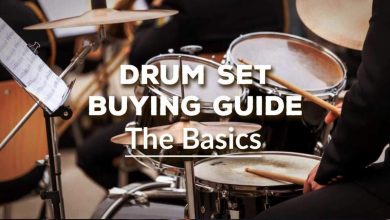The Kinetics of Drumming: Physics and Physiology of Percussion

The Kinetics of Drumming: Physics and Physiology of Percussion
The Science Behind the Beat
Understanding Drumming Kinetics
When you watch a skilled drummer effortlessly flow through intricate rhythms and beats, you can’t help but wonder about the science that makes it all possible. Drumming is not only an art form but also a fascinating combination of physics and physiology. In this blog post, we delve into the world of drumming kinetics to explore the mechanics behind this rhythmic phenomenon.
Physics of Drumming
Drumming involves the interaction of various physical forces and principles. One important concept in drumming physics is vibrations. When a drumhead is struck, it vibrates, creating sound waves that travel through the air. These sound waves reach our ears, and we perceive them as distinct tones and pitches.
The force and speed with which the drumstick strikes the drumhead determine the volume and intensity of the sound produced. The angle at which the drumstick hits the drumhead changes the tone by altering the contact area and the force distribution.
Physiology of Drumming
Drumming also has a significant impact on the drummer’s physiology. The physical exertion involved in drumming leads to increased heart rate and blood circulation, making it a cardiovascular workout. Drummers often have strong upper body muscles, especially in arms, wrists, and fingers, as these are the primary parts involved in producing the beats.
The repetitive motion of drumming can also enhance coordination and motor skills. Drummers develop a strong sense of timing and rhythm, which requires precise movements and synchronization between different limbs.
FAQs About Drumming Kinetics
1. How important is technique in drumming?
Technique plays a crucial role in drumming. A proper technique ensures efficient movement, minimizes the risk of injury, and enhances the sound quality. It allows drummers to produce powerful strokes with less effort, enabling them to play for extended periods without fatigue.
2. Can drumming help improve cognitive abilities?
Yes, drumming has been shown to enhance cognitive abilities. The complex rhythmic patterns and coordination required in drumming stimulate the brain and can improve memory, attention, and problem-solving skills.
3. Are there any health benefits of drumming?
Drumming offers several health benefits. It can be a great stress reliever and a form of self-expression. It boosts mood, releases endorphins, and reduces anxiety and depression. Additionally, drumming can improve posture, increase flexibility, and strengthen muscles.
The Rhythm of Life
Drumming is not just a musical activity; it combines the marvels of physics and physiology to create an immersive experience. The interplay between the physical aspects of drumming and the impact on the drummer’s body is truly remarkable. So, next time you find yourself tapping your foot to a beat, remember the science behind the rhythm and appreciate the kinetic art form that is drumming.
By understanding the kinetics of drumming, we can gain a deeper appreciation for the skill, technique, and physicality involved in this rhythmic world.
If you are interested in exploring the world of drumming further, why not give it a try? Start by getting yourself a drum set and embark on a journey filled with rhythm, physics, and physiological wonders. Happy drumming!
We hope this blog post has satisfied your curiosity about the physics and physiology of drumming. If you have any more questions or would like to share your thoughts and experiences, feel free to leave a comment below!



